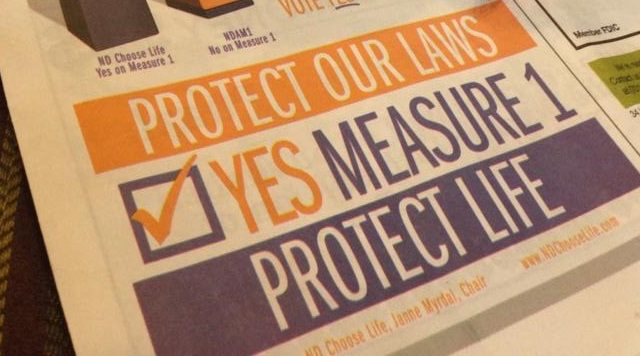Matt Evans: Abortion Measure Took North Dakotans Out Of Their Comfort Zone

I was having lunch with a friend this week and he asked me what my conclusions were from this election.
I’ve come up with two, but I think they’re actually due to the same underlying cause.
The first one is this: North Dakotans have a vague, hazy comfort zone on abortion, and they respond negatively to anything perceived as too far to the pro-life side of it. Right or wrong, the opponents of Measure 1 convinced North Dakotans that the measure was going to do more harm than good.
(The voters may also respond negatively to anything too far to the pro-abortion side, but to my knowledge, that wasn’t tested by this election)
Measure 1 got more total votes than any other issue on the entire ballot. More people cared to weigh in on Measure 1 than they did the US House race, the hotly contested Ag commissioner race, or any of the other measures. Nearly everyone had something to say about Measure 1. The state website says that there were 254,198 total ballots cast, and 250,616 of them had something to say about Measure 1.
It’s not just Measure 1, however. Candidates that were too closely associated with strong pro-life positions also were defeated or barely survived. The obvious examples are Sitte and Grande – both were established representatives and were associated with Measure 1, and were outspoken pro-lifers.
Many people publicly supported M1 – like Congressman Cramer – and were elected or re-elected. But Cramer wasn’t the focus of anti-M1 pressure, whereas Sitte and Grande both were. All I know about Sitte’s opponent is that she ran against Sitte’s past statements on abortion, IVF, etc. I also know that abortionists from outside of that district were contributing heavily to her campaign.
So, the conclusion here is that people who want to move the state needle on abortion need to be careful, have a targeted message, and not have any skeletons in their closet.
The second conclusion is: North Dakotans are fatigued from ballot initiatives. We were presented with a slate of 8 state level measures, and I had 3 more county measures on my ballot. Except for the gimme measure 2, on not introducing some new tax someday, the state measures didn’t just fail, they all failed by a considerable margin. Many people agreed with the intent of many of the measures, but the actual measures on the ballot all failed, and most voters had something to say about them. Measure 5 had nearly as many total votes as M1, and the least voted-on measure (M4) still had 239,296 votes.
If M4 had been worded as “make it harder to put so many ballot initiatives on here”, it might have passed.
Regarding the 3 measures in my county – 2 failed, and the 1 that passed was to allow for tax exemptions.
So those are my two conclusions: North Dakotans were fatigued by ballot initiatives, and were uncomfortable with Measure 1 and the people strongly identified with it.
In fact, I think both of these are symptoms of the same underlying conclusion: North Dakotans are actually pretty happy with how things are sitting right now, and the results weren’t a referendum on how the state is being run, but instead, a referendum on people and issues that were thought of as trying to change the state too much, too quickly.
While all of us have things we want the state to do better on, in broad strokes, very few people with the power to make changes were kicked out, and none of measures that actually might change something passed.




